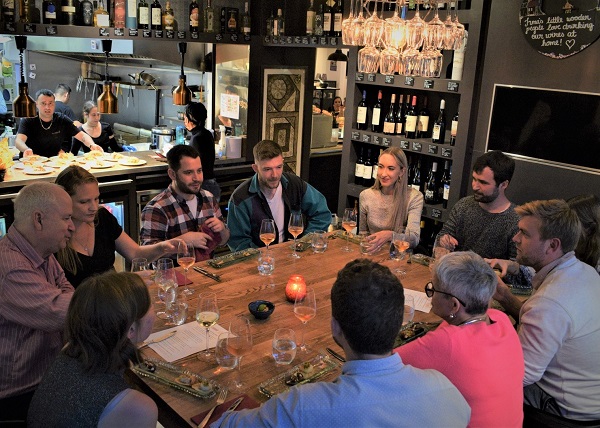You know those places that guidebooks miss? SE1 has them in abundance. This postcode district covers Bankside, South Bank, Southwark, and parts of Bermondsey and Vauxhall, but there’s so much more tucked away than most visitors ever discover.
Sure, everyone heads straight to The Shard (the tallest building in the UK and Western Europe) or Borough Market (one of London’s oldest and most atmospheric markets). The real magic happens in the quieter corners. Bermondsey Street enchants with its independent restaurants, cafés and shops. The railway arches of Flat Iron Square buzz with fantastic food vendors. These spots reward curious explorers who venture beyond the obvious.
SE1 also offers peaceful green spaces perfect for a breather, plus cultural treasures like the White Cube Gallery in its converted warehouse setting and the impressive Golden Hinde reconstruction. Whether you’re visiting London for the first time or you’re a local looking for fresh discoveries, this guide will show you the hidden pathways, forgotten histories and genuine neighbourhood favourites that make SE1 truly special.
Start your walk at Bermondsey Street
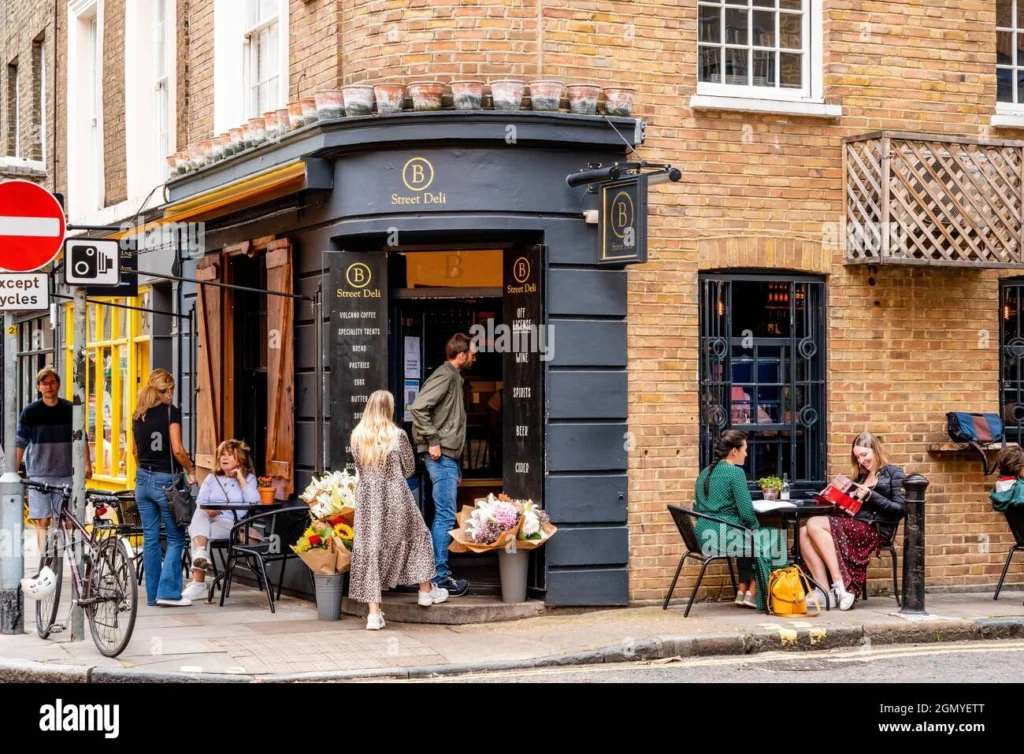
Image Source: Alamy
Bermondsey Street sits just five minutes from London Bridge station, and we think it’s one of SE1’s most delightful thoroughfares. This charming street offers the perfect mix of indulgence and sightseeing—making it an ideal starting point for your SE1 adventure.
Grab a coffee at The Watch House
That charming octagonal building at Bermondsey Street’s southern end has quite a story. Built between 1810-12, The Watch House originally served parish officials who maintained law and order while protecting churchyard graves from body snatchers. The building was one of a matching pair, with the other housing the charnel house and parish engine. Parish cages on either side held local wrongdoers.
The Watch House now operates as an atmospheric coffee shop that keeps much of its original character intact. This tardis-like space seats just ten people yet serves hundreds of customers daily. The original timbers remain, and on chilly days you’ll find a wood fire crackling in the updated fireplace.
The Watch House has grown from this single location to 20 spots across London and beyond, including Bath and even New York. Their commitment to quality coffee remains strong. They seek out exceptional beans, ensure traceability, and explore rare varieties from around the world.
Explore White Cube Gallery
Step directly across the street and discover White Cube Bermondsey—a remarkable contemporary art gallery housed in a converted 1970s warehouse. Since opening in October 2011, this 58,000 sq ft space earned recognition as Europe’s largest commercial gallery at launch.
Three principal exhibition spaces make up the ‘South Galleries’. The venue also features three smaller ‘North Galleries’, substantial warehousing, private viewing rooms, and a 60-seat auditorium for education programmes, artists’ films and lectures.
White Cube showcases major contemporary artists including Tracy Emin, Chapman Brothers, Damien Hirst, and British sculptor Antony Gormley. Entry costs nothing, so you can pop in whenever you’re passing without committing to a lengthy visit.
Try a doughnut at St. John Bakery
Your SE1 area experience wouldn’t be complete without sampling what many call London’s finest doughnuts. St. John Bakery at Arch 72 on Druid Street (a short stroll from Bermondsey Street) has developed a devoted following for these sweet treats.
The bakery operates Friday through Sunday (Fridays 8am-4pm, Saturdays 9am-5pm, Sundays 9am-4pm) from a railway arch and draws consistent crowds. These pillowy doughnuts have earned the nickname “pillows of joy”.
St. John also offers excellent traditional baked goods like Eccles cakes and sourdough bread. Those famous doughnuts keep people queuing though—many locals rate them above other celebrated London bakeries.
These three spots create a perfect SE1 morning: begin with coffee at The Watch House, explore contemporary art at White Cube, then treat yourself to one of London’s best doughnuts at St. John Bakery.
Wander through Borough Market and beyond
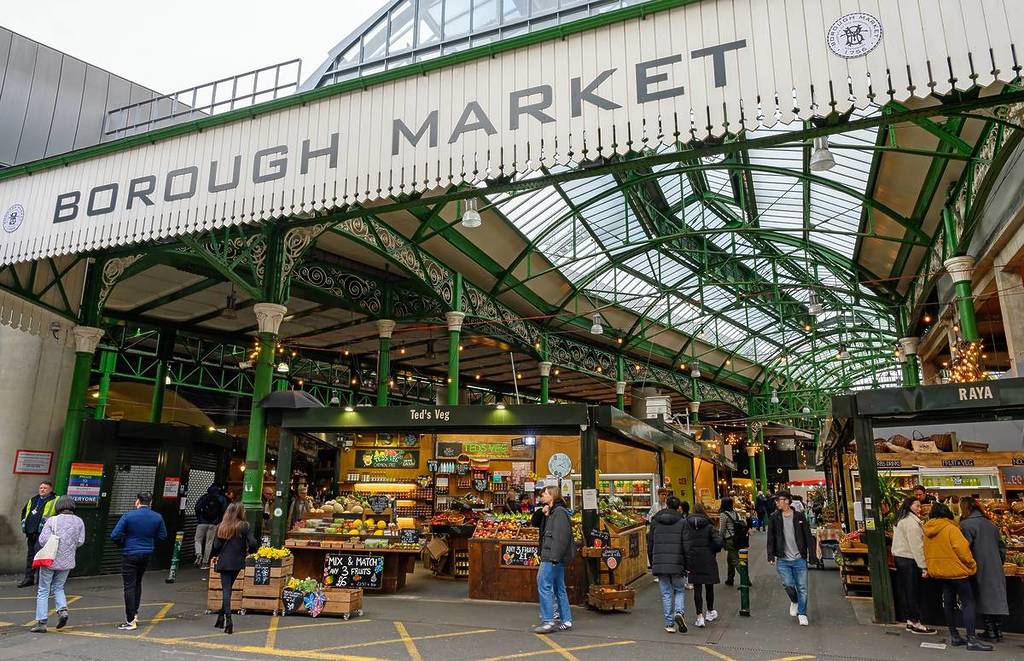
Image Source: Traverse Blog
Beneath the railway arches and through mediaeval alleyways, Borough Market pulses with energy that’s impossible to resist. This beloved food destination traces its roots back approximately 1,000 years, though today’s vibrant market took shape mainly during the 1990s.
Hidden corners of Borough Market
The market’s maze-like layout holds wonderful surprises. You’ll find Borough Market unfolds in distinct sections, each with its own personality. Three Crown Square serves as the main trading hub—perfect for fresh produce, cheeses, meats, and seafood. Borough High Street, originally built as a greenhouse, now buzzes with food demonstrations and workshops.
Here’s the insider secret: explore the edges. That’s where real treasures hide. Tartufaia greets you with truffle aromas before you even spot the stall. Gujarati Rasoi serves exceptional Indian food from an unassuming corner—no fancy signs, just outstanding flavours.
Southwark Cathedral’s quiet garden
Step away from the market bustle and you’ll discover an unexpected sanctuary—Southwark Cathedral’s churchyard. This ancient burial ground offers peaceful respite from SE1’s lively streets.
The churchyard received a beautiful restoration in 2015, complete with biblical and Shakespearean plants. During summer months (June to September), you can follow a Shakespearean Botanical Trail through the garden.
The herb garden deserves special attention. Built into the mediaeval foundations of the Bishop’s Chapel, it grows more than 50 different herbs that Priory Canons once used for healing, cooking, and brewing. The design echoes mediaeval knot gardens with neat box-edged beds—a living piece of history.
Nancy’s Steps and the Mug House pub
Just a short stroll from the cathedral, stone steps climb from Tooley Street up to London Bridge. These are the famous “Nancy’s Steps”—remnants of John Rennie’s 1831 London Bridge.
Dickens fans might recognise these steps from “Oliver Twist.” Despite what the plaque suggests, Nancy wasn’t actually murdered here—Bill Sikes killed her at home in the novel. The steps do play a crucial role though, as Nancy’s secret meeting place with Oliver’s benefactors while Fagin’s spy listened in.
After exploring these historic steps, treat yourself to the Mug House—a charming wine bar hidden under London Bridge. Candlelit tables and cosy atmosphere make this spot perfect for escaping the commuter rush above. The place feels delightfully Dickensian, complete with pewter tankards decorating the atmospheric bar.
Discover Bankside’s secret history
Bankside holds stories that most people walk right past. These cobbled streets hide layers of London’s past that reveal themselves to those who know where to look.
The Ferryman’s Seat
Near Bear Gardens, a simple stone ledge sits quietly in the wall. This is The Ferryman’s Seat – a 17th-century resting spot for the men who rowed passengers across the Thames before bridges existed. They would wait here for customers needing passage to the north bank. Today, this humble stone indent stands as one of the oldest riverside features in SE1, preserving memories of when the river served as London’s main road.
Cardinal Cap Alley
Cardinal Cap Alley winds off Bankside with a story that would make your grandmother blush. This narrow passageway takes its name from a brothel that once operated here, marked by a cardinal’s red hat sign. Back in Elizabethan times, this area buzzed with theatres, bear-baiting pits and establishments of questionable reputation. The alley offers a glimpse into Bankside’s days as London’s pleasure district – conveniently outside the City’s moral jurisdiction. You’ll find it near the replica Globe Theatre, connecting directly to Shakespeare’s London.
Winchester Palace ruins
The rose window of Winchester Palace stands along the riverside – all that remains of a magnificent 12th-century complex. The powerful Bishops of Winchester built this as their London residence, hosting royalty and church dignitaries for centuries. The surviving wall with its delicate tracery window hints at the palace’s former grandeur. These ruins stayed hidden until a 19th-century warehouse fire revealed them to modern Londoners, making them an unexpected historical treasure.
Clink Street and the old prison
We owe the word “clink” to this very street, where England’s oldest prison once stood. The Clink Prison operated from the 12th century until 1780, holding everyone from religious rebels to debtors. The Clink Museum now occupies the site, displaying replicas of torture devices and cells. Look for the metal sculpted flames decorating the buildings as you walk through – they commemorate the Great Fire of Southwark that devastated this area in 1676, London’s lesser-known conflagration.
Eat like a local in SE1
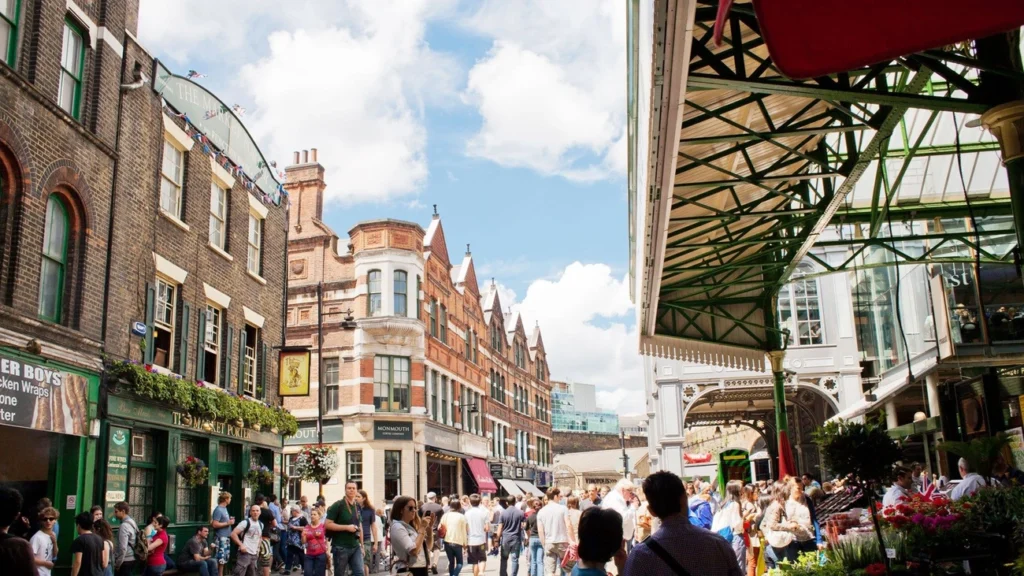
Image Source: CN Traveller
SE1 serves up an eclectic mix of eateries that locals treasure. From historic pubs to modern food markets, these culinary gems showcase the neighbourhood’s diverse food scene.
Casse-Croute for French bistro vibes
At 109 Bermondsey Street, Casse-Croûte delivers a genuine slice of Paris in SE1. This intimate bistro serves authentic French cuisine with a seasonally inspired menu that changes daily. Open for lunch from noon all week and dinner from 6pm Monday through Saturday, this cosy spot requires booking the old-fashioned way—by telephone rather than online.
What truly sets Casse-Croûte apart is its unpretentious approach to classic French cooking. The Jerusalem artichoke soup with Roquefort cream exemplifies their style: silky, buttery and perfectly executed without unnecessary frills. Many diners find the genuinely French atmosphere so convincing that stepping inside feels like being transported directly to a backstreet in Montmartre.
Flat Iron Square’s food arch
Beneath the railway arches near London Bridge sits Flat Iron Square, a vibrant food and culture hub. This popular spot houses high-end street food concepts designed by world-renowned and Michelin-starred chefs.
The atmosphere here remains lively yet laid-back, with options ranging from Tom Kemble’s Dough pizzas to Yiannis Mexis’ Opa souvlaki. The sun-drenched garden offers a perfect retreat from the city’s buzz.
The George Inn’s historic courtyard
The George Inn on Borough High Street offers both historical significance and excellent pub fare. As the only surviving galleried London coaching inn, this Grade I listed building dates back to mediaeval times, though it was rebuilt after a fire in 1677.
Charles Dickens frequently visited The George, even mentioning it in his novels “Little Dorrit” and “Our Mutual Friend”. You can enjoy traditional pub meals in the Middle Bar (formerly the Coffee Room) or dine in the upstairs restaurant located in the galleried section of this timber-framed treasure.
Franco Manca’s sourdough pizza
Franco Manca’s London Bridge location serves some of SE1’s best sourdough pizza. Their philosophy centres on radical simplicity—affordable pizzas crafted from honest ingredients and fresh, handmade dough kneaded daily.
Their authentic Neapolitan-style pizzas have earned praise for both quality and value. The inviting atmosphere features exposed brick and high ceilings, complemented by an open kitchen where friendly pizza chefs often engage with curious diners. This spot offers a welcome reprieve from the tourist-heavy establishments nearby.
Find peace in SE1’s hidden green spaces
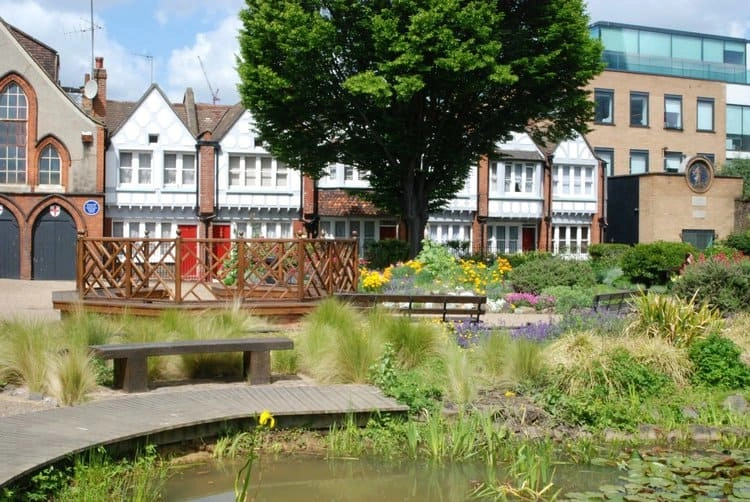
Image Source: Bankside London
Between all the bustling streets and historic discoveries, SE1 offers some lovely green retreats where you can catch your breath. These quiet sanctuaries provide the perfect pause during your SE1 explorations.
Red Cross Garden
Off Redcross Way, you’ll find this Victorian garden that tells a remarkable story of social reform. Created in 1887 by Octavia Hill (co-founder of the National Trust), this beautifully restored space embodies her belief that “natural beauty should be available to everyone.” The charming cottages around the garden were built as model housing for working-class families. The central lawn, flower beds, and small pond create an intimate atmosphere that feels miles away from the nearby Borough High Street bustle.
Potters Fields Park
Right alongside the Thames between Tower Bridge and City Hall, Potters Fields Park offers spectacular riverside views. This contemporary green space features ornamental grasses and perennial plantings that look beautiful throughout the year. The park’s name hints at its history as a site for pottery kilns from the 17th and 18th centuries. Today, local office workers love it for lunch breaks, and it’s brilliant for river-watching.
Crossbones Graveyard memorial
Perhaps the most moving green space in SE1, Crossbones serves as a memorial garden on the site of a mediaeval unconsecrated burial ground. This was once the final resting place for thousands of “outcast dead”—mainly prostitutes known as “Winchester Geese” and paupers. The garden now honours their memory. The distinctive entrance gate, decorated with ribbons, tokens and messages, has become a powerful community shrine for those who lived and died on society’s margins.
Conclusion
SE1 shows you a different side of London. The crowds head to The Shard and Borough Market, but now you know where the real discoveries wait. The Watch House serves exceptional coffee in a building with genuine history. White Cube Gallery offers world-class contemporary art without charging a penny. Borough Market’s edges hide culinary gems that most people walk right past.
The historical layers tell remarkable stories. Winchester Palace ruins stand quietly by the river. The Ferryman’s Seat waits patiently in its wall. These fragments connect you to centuries of London life in ways that newer attractions simply can’t match.
We all have our favourite local spots… The food scene here satisfies every taste. Casse-Croûte transports you straight to Paris. Franco Manca proves that excellent pizza doesn’t need to be expensive. Flat Iron Square brings together talented chefs under historic railway arches. The hidden green spaces offer perfect retreats when you need a moment of calm.
The famous landmarks draw the tourists, but these quieter corners reveal SE1’s true personality. The best London experiences happen when you wander away from the obvious routes. Next time you’re south of the Thames, take time to explore these secret spots. You’ll discover why locals treasure this remarkable riverside district.
Key Takeaways
Discover SE1’s authentic character beyond tourist hotspots through these local insider secrets that reveal the true essence of this historic London district.
• Start at Bermondsey Street for The Watch House coffee, White Cube Gallery’s free contemporary art, and St. John Bakery’s legendary doughnuts • Explore Borough Market’s hidden edges for authentic finds like Tartufaia truffles and Gujarati Rasoi’s genuine Indian cuisine • Uncover Bankside’s mediaeval secrets including Winchester Palace ruins, Cardinal Cap Alley, and the historic Ferryman’s Seat • Dine like locals at Casse-Croûte’s authentic French bistro, Flat Iron Square’s artisan street food, and The George Inn’s historic courtyard • Find peaceful retreats in Red Cross Garden’s Victorian charm, Potters Fields Park’s Thames views, and Crossbones Graveyard’s poignant memorial
SE1’s true magic lies in these lesser-known corners where history, culture, and community converge. These secret spots offer genuine London experiences that transform visitors into temporary locals, revealing why this riverside district remains one of the capital’s most fascinating neighbourhoods.
FAQs
Q1. What are some hidden gems in SE1 that tourists often miss? SE1 is full of secret spots, including the charming Bermondsey Street with its independent shops and cafes, the hidden corners of Borough Market, and peaceful green spaces like Red Cross Garden and Potters Fields Park.
Q2. Where can I find the best coffee in SE1? The Watch House on Bermondsey Street is a local favourite. This atmospheric coffee shop is housed in a historic octagonal building that once served parish officials, offering excellent coffee in a unique setting.
Q3. Are there any lesser-known art galleries in SE1? White Cube Gallery on Bermondsey Street is a must-visit. Housed in a converted 1970s warehouse, it’s one of Europe’s largest commercial galleries and showcases contemporary art by renowned artists. Best of all, entry is free.
Q4. What’s a good place for authentic French cuisine in SE1? Casse-Croûte on Bermondsey Street offers a genuine slice of Paris in London. With its daily changing menu of authentic French dishes and cosy atmosphere, it’s a favourite among locals for a taste of France.
Q5. Are there any interesting historical sites in SE1 that aren’t well-known? SE1 is rich in hidden history. Look out for the Ferryman’s Seat near Bear Gardens, the ruins of Winchester Palace, and Clink Street, which gave its name to the term “in the clink”. These often-overlooked sites offer fascinating glimpses into London’s past.

